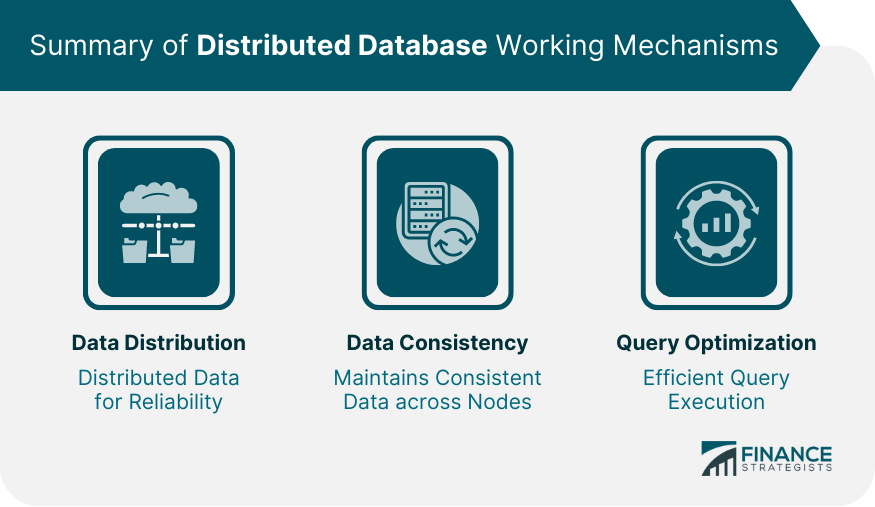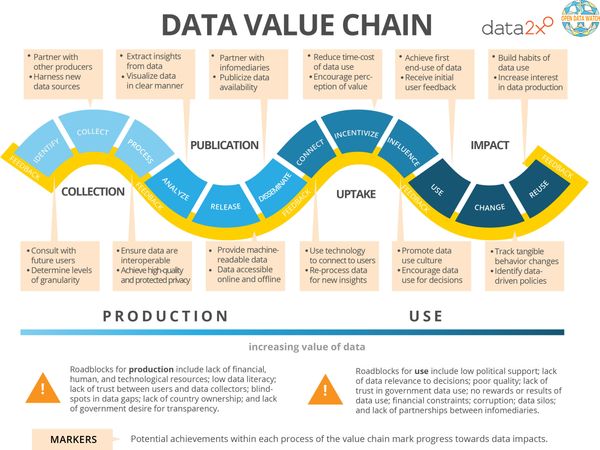Overview
What is SQL?
SQL, which stands for Structured Query Language, is a powerful programming language used for managing and manipulating enterprise databases. It provides a standardized way to interact with databases, allowing users to retrieve, insert, update, and delete data. SQL is widely used across industries and is essential for data analysis, reporting, and decision-making. With its intuitive syntax and extensive functionality, SQL unlocks growth opportunities by enabling businesses to efficiently store, organize, and retrieve data from their databases.
Importance of SQL in business
SQL plays a crucial role in the success of businesses by enabling efficient database management. With SQL, businesses can easily organize, retrieve, and manipulate large amounts of data, ensuring smooth operations and informed decision-making. Efficient database management allows businesses to streamline processes, improve productivity, and gain valuable insights from their data. By harnessing the power of SQL, businesses can unlock growth opportunities and stay competitive in today’s data-driven world.
Benefits of using SQL for data analysis
SQL is a powerful tool for data analysis that offers numerous benefits. One of the key benefits of using SQL for data analysis is its ability to perform advanced analytics. With SQL, you can easily write complex queries to extract meaningful insights from large datasets. Whether you need to calculate statistical measures, perform data aggregations, or generate custom reports, SQL provides the necessary functions and syntax to streamline your analytical tasks. By leveraging SQL’s analytical capabilities, you can uncover hidden patterns, identify trends, and make data-driven decisions with confidence. With its versatility and efficiency, SQL empowers analysts and data professionals to unlock growth opportunities and drive business success.
Understanding SQL Queries
Basic SQL syntax
The basic SQL syntax is the foundation of working with databases. It allows users to interact with the database by performing various operations such as retrieving, inserting, updating, and deleting data. Understanding the basic SQL syntax is essential for writing queries that can extract meaningful information from the database. One of the important concepts in SQL is working with physical records. Physical records represent the actual data stored in the database tables. By manipulating and querying these physical records, users can retrieve specific information or modify the existing data. Mastering the basic SQL syntax enables users to efficiently manage and manipulate the physical records in a database.
Selecting data from a table
In order to retrieve specific data from a table in SQL, you can use the SELECT statement. This statement allows you to specify the columns you want to retrieve and apply conditions to filter the data. The SELECT statement is an essential component of SQL queries and is used to extract information from databases. By selecting data from a table, you can access and analyze the relevant information needed for various purposes such as reporting, analysis, and decision-making.
Filtering and sorting data
Filtering and sorting data is a crucial aspect of working with SQL. It allows us to extract specific information from a database and organize it in a meaningful way. By applying filters, we can narrow down the data to only include the records that meet certain criteria. This is especially useful when dealing with large datasets, as it helps us focus on the information that is relevant to our analysis. Sorting data, on the other hand, enables us to arrange the records in a particular order, such as ascending or descending. This can be helpful when we want to identify trends or analyze the data in a specific sequence. DBA tips are essential for optimizing the filtering and sorting process, ensuring efficient and accurate results. By following these best practices, we can unlock growth opportunities and make the most out of SQL’s capabilities.
Advanced SQL Techniques

Joining multiple tables
Joining multiple tables is a powerful technique in SQL that allows us to combine data from different tables based on a common field. This capability enables us to extract meaningful insights and perform complex analysis. One of the key benefits of joining multiple tables is improving query performance. By joining tables instead of making multiple separate queries, we can reduce the amount of data retrieval and processing required, resulting in faster and more efficient queries. This optimization technique is particularly useful when dealing with large datasets or complex queries. By leveraging the power of SQL’s join operations, we can unlock growth opportunities and gain valuable insights from our data.
Aggregating data with GROUP BY
Aggregating data with GROUP BY is a powerful feature in SQL that allows you to group rows based on a specific column or expression. This is particularly useful when you want to perform calculations or apply aggregate functions to subsets of data. By using GROUP BY, you can easily summarize and analyze data in a SQL Server database. SQL Server Database Optimization is an important aspect of managing large amounts of data efficiently. With the ability to group data using GROUP BY, you can identify patterns, trends, and insights that can help in optimizing the performance of your database. By leveraging the power of SQL and GROUP BY, you can unlock growth opportunities and make informed decisions for your business.
Using subqueries for complex analysis
Using subqueries for complex analysis allows us to perform advanced calculations and retrieve specific data from multiple tables. By nesting queries within the main query, we can break down complex problems into smaller, more manageable parts. This technique is especially useful when dealing with large datasets or when we need to combine data from different sources. Subqueries provide flexibility and efficiency, enabling us to extract valuable insights and uncover growth opportunities. With SQL’s powerful subquery capabilities, we can delve deeper into our data and uncover hidden patterns and correlations.
Optimizing SQL Performance

Indexing for faster queries
Indexing is a crucial technique in SQL for improving query performance. By creating indexes on specific columns, the database can quickly locate the required data, resulting in faster query execution. Indexing is particularly beneficial when dealing with large datasets or complex queries. It allows for efficient data retrieval and reduces the time taken to process queries. Additionally, indexing can enhance the overall performance of the database system, enabling businesses to unlock growth opportunities by enabling faster and more efficient data analysis.
Avoiding unnecessary joins
Avoiding unnecessary joins is a crucial aspect of database optimization. By minimizing the number of joins in SQL queries, we can significantly improve the performance and efficiency of our database operations. Unnecessary joins can lead to increased query execution time and resource consumption, which can negatively impact the overall performance of the system. Therefore, it is important to carefully analyze the database schema and query requirements to identify and eliminate any unnecessary joins. By doing so, we can unlock growth opportunities and ensure smooth and efficient database operations.
Optimizing query execution plans
Optimizing query execution plans is a crucial step in improving the performance of SQL queries. By analyzing and fine-tuning the execution plans, developers can ensure that the queries are executed in the most efficient manner. This involves identifying and eliminating any bottlenecks or inefficiencies in the query execution process. Key factors to consider when optimizing query execution plans include selecting appropriate indexes, minimizing the number of joins, and using query hints or optimization techniques. By implementing these strategies, developers can unlock significant growth opportunities and enhance the overall performance of their SQL queries.
SQL for Business Intelligence

Creating reports and dashboards
Creating reports and dashboards is a crucial aspect of data analysis. It allows businesses to visualize and communicate insights from their data in a clear and concise manner. One powerful tool for creating reports and dashboards is SQL. With SQL, businesses can extract and manipulate data from databases such as MySQL. By leveraging SQL’s querying capabilities, businesses can generate meaningful visualizations and gain valuable insights from their data. For example, MySQL data visualization examples can showcase trends, patterns, and correlations within the data, enabling businesses to make data-driven decisions. By using SQL to create reports and dashboards, businesses can unlock growth opportunities and drive success.
Analyzing trends and patterns
In the world of data analysis, analyzing trends and patterns is crucial for unlocking growth opportunities. By examining the data, businesses can identify emerging market trends, consumer preferences, and potential areas for improvement. With the power of SQL, analysts can efficiently query large datasets, perform complex calculations, and generate valuable insights. SQL allows for the identification of patterns, correlations, and anomalies in the data, enabling businesses to make data-driven decisions and optimize their strategies. By leveraging SQL’s capabilities, organizations can uncover hidden opportunities, streamline operations, and drive business growth.
Making data-driven decisions
In today’s data-driven world, making informed decisions is crucial for businesses to stay competitive. With the power of SQL, companies can unlock growth opportunities by analyzing large datasets and extracting valuable insights. SQL allows businesses to query, manipulate, and transform data, enabling them to make data-driven decisions that drive business growth. By leveraging SQL, organizations can uncover patterns, trends, and correlations in data, enabling them to optimize processes, identify new market opportunities, and improve overall performance. With its versatility and efficiency, SQL is an essential tool for businesses looking to harness the power of data and unlock growth opportunities.
Conclusion

The power of SQL in unlocking growth opportunities
SQL, which stands for Structured Query Language, is a powerful tool for unlocking growth opportunities in today’s data-driven world. With its ability to retrieve, manipulate, and analyze data from relational databases, SQL enables businesses to make informed decisions and drive strategic growth. Whether you’re a MySQL developer looking to optimize database performance or a business analyst seeking valuable insights, SQL provides the foundation for unlocking the full potential of your data. However, it’s important to note that conflicts can arise when multiple developers are working on the same database simultaneously. To mitigate these conflicts, it’s crucial to establish clear communication channels and implement version control systems. By harnessing the power of SQL and addressing potential conflicts, businesses can unlock growth opportunities and gain a competitive edge in the market.
Continuous learning and improvement
Continuous learning and improvement are essential in today’s fast-paced world. As technology continues to evolve, so do the types of databases that businesses rely on. Staying up-to-date with the latest advancements in database technology is crucial for unlocking growth opportunities. Whether it’s understanding the different types of databases, such as relational, NoSQL, or graph databases, or learning about new database management systems, continuous learning allows businesses to optimize their data storage and retrieval processes. By staying informed and adapting to the ever-changing landscape of databases, businesses can make informed decisions and leverage their data to drive innovation and achieve competitive advantage.
Embracing SQL for business success
SQL is a powerful tool for businesses to unlock growth opportunities. Embracing SQL can lead to significant business success by enabling organizations to effectively manage and analyze large datasets. One important aspect of SQL is MySQL performance tips. By implementing these tips, businesses can optimize the performance of their MySQL databases, resulting in faster query execution and improved overall efficiency. With the right SQL skills and knowledge of MySQL performance tips, businesses can gain a competitive edge in today’s data-driven world.
In conclusion, OptimizDBA Database Optimization Consulting is the trusted industry leader in remote DBA services. With over 500 clients and a track record of delivering transaction speeds that are at least twice as fast as before, we guarantee a significant increase in performance. Our average speeds are often 100 times, 1000 times, or even higher! If you’re looking to optimize your database and experience unparalleled performance, contact OptimizDBA today.







